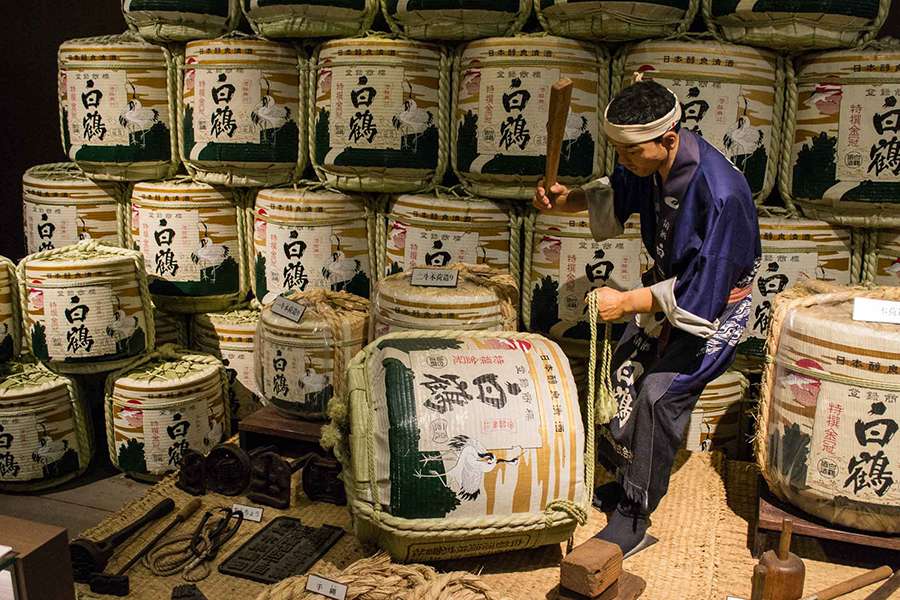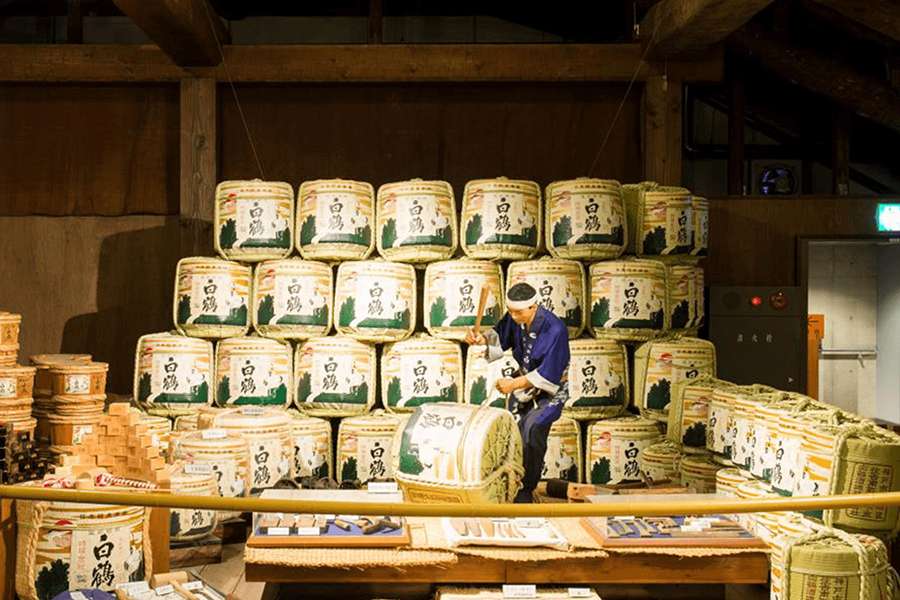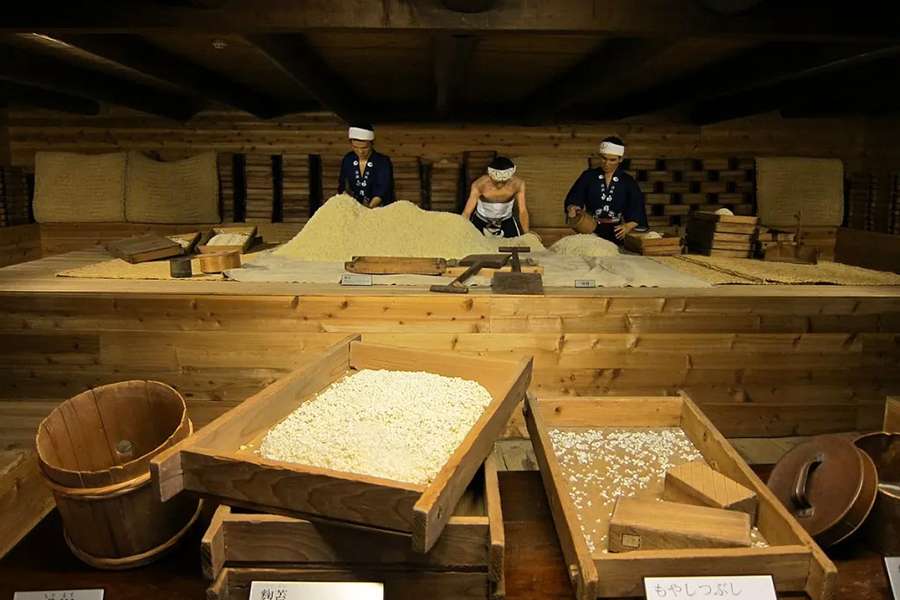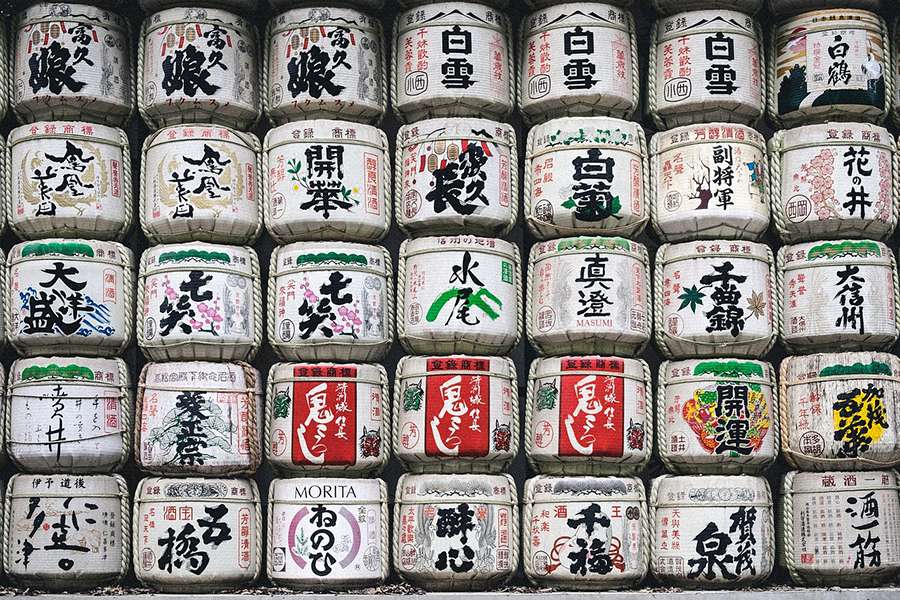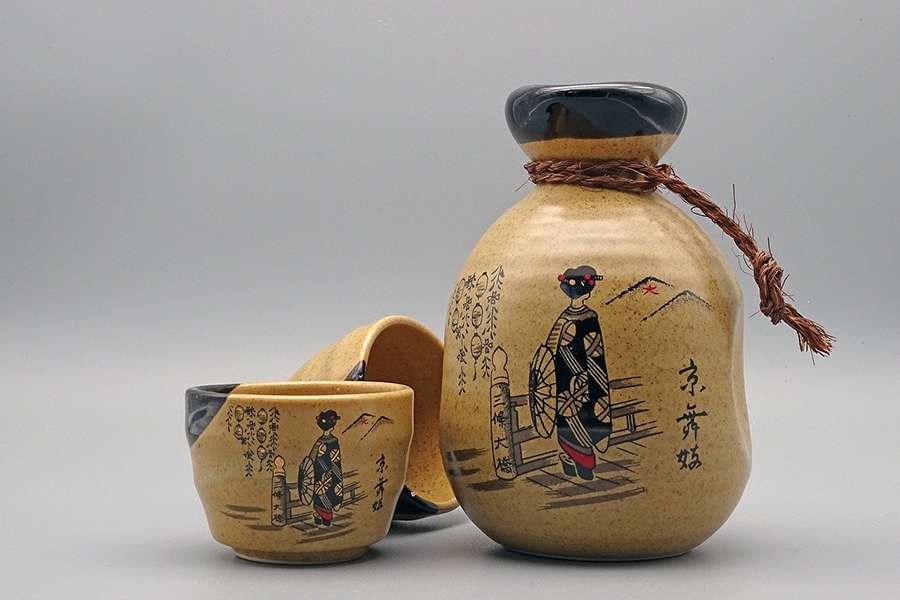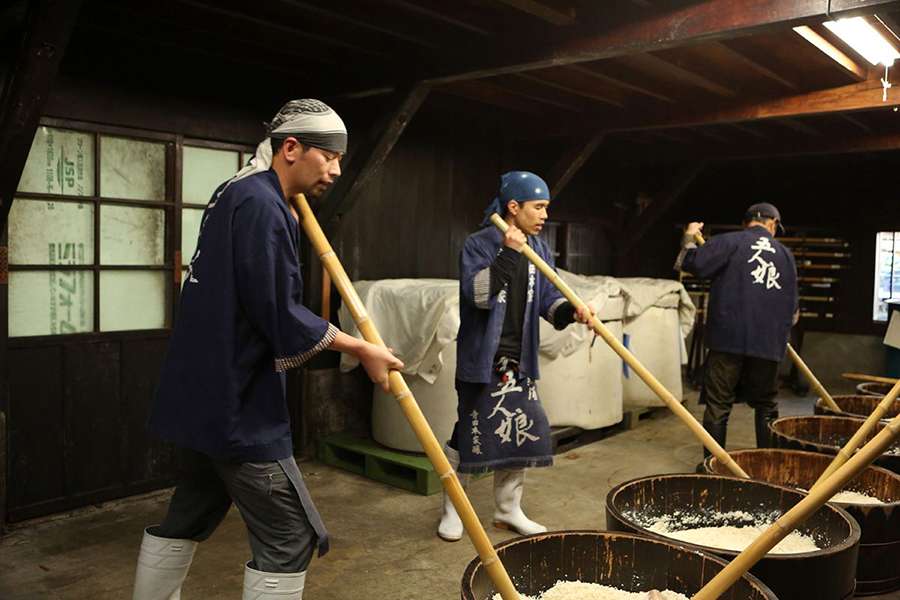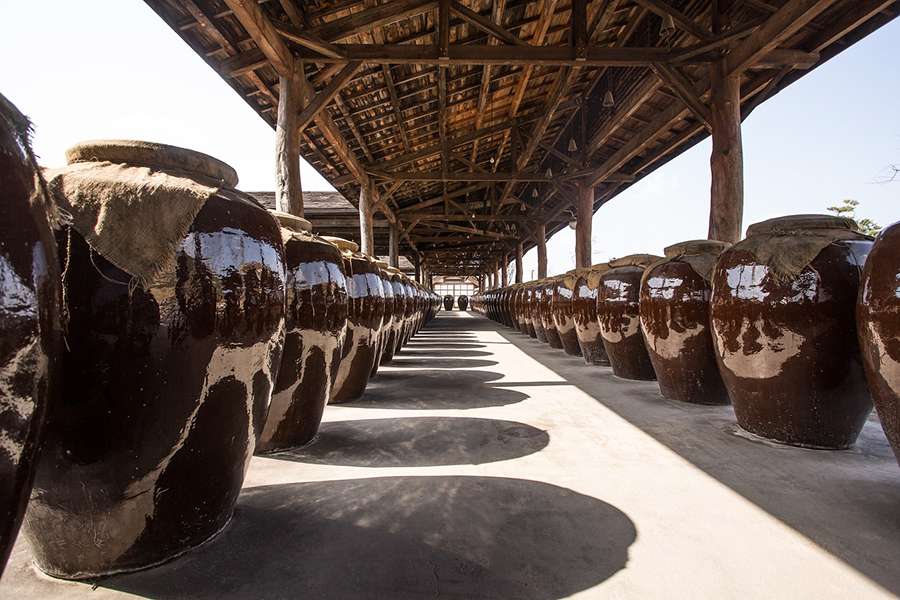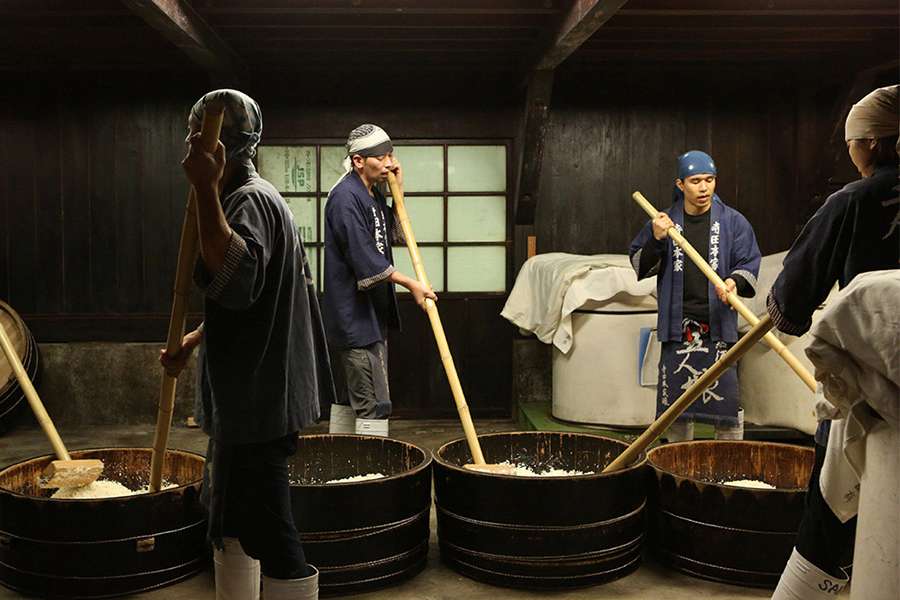If the surge in craft sake brands around the world hasn't convinced you of this revered Japanese drink's appeal, it’s time to try the real thing! However, in Japan, requesting “sah-kee” might not get you what you expect. While "sake" generally refers to alcohol in English, in Japan it’s a broad term covering any alcoholic beverage. To ask for the rice-based Japanese brew, use the word nihonshu, which is how the locals refer to their traditional sake. This versatile drink is celebrated by Michelin-starred chefs for its ability to enhance flavors in fine cuisine and is equally enjoyed by the working crowd with casual bites like fried chicken. To truly appreciate nihonshu, it’s helpful to understand its origins, production methods, and types. Read on for insights into how sake is made, the range of varieties available, and a guide to the top sake breweries in Japan for an unforgettable tasting experience.
How Sake is Made
Nihonshu, often referred to as rice wine, typically has an alcohol content of around 9-16 percent. Its ingredients are deceptively simple—rice, water, and a special yeast starter—but brewing requires exceptional skill, timing, and a deep knowledge of the process. Sake begins with toji (brewers) selecting high-quality sake rice, which is milled to remove 30-65% of each grain. The refined grains are then steamed, with part going to a fermentation tank while the rest is mixed with a special mold that creates koji, an essential ingredient for converting rice starch into sugars. The brewing process is marked by a rich, chestnut-like aroma that fills the brewery during koji production. Over an 18-32 day period, the koji and yeast starter ferment with the rice mash, transforming starches into alcohol under precise temperature control. Brewers may also add distilled alcohol or sugar to refine the final flavor profile. After filtering and, in some cases, pasteurizing and aging, the nihonshu is ready to be bottled and enjoyed.
Types of Sake
With so many varieties, there's a sake for every palate. Here's a rundown of some common types for beginners:
Junmai: Made only from rice, water, and koji, junmai sake has no added alcohol and can be enjoyed warm or at room temperature. This pure form of sake is beloved for its smooth, full-bodied flavor.
Honjozo: Using rice polished to 70% of the original grain, honjozo includes a touch of brewers' alcohol, resulting in a lighter taste that’s delightful when served either warm or cold.
Ginjo and Junmai Ginjo: Ginjo sake is preferred chilled for its complex, fruity flavors, achieved by polishing rice to 60% and using specialized yeast. Junmai ginjo, without added alcohol, offers a similar flavor profile.
Daiginjo and Junmai Daiginjo: Known as premium sake, these types require highly polished rice (50% or less) and extensive skill to craft. Best served cold, daiginjo and junmai daiginjo have refined, complex flavors, making them among the most prestigious and expensive sakes.
Futsushu: A standard, or "table sake," futsushu is less polished and typically used for casual drinking. While affordable and popular in bars, futsushu is generally not favored for its flavor complexity.
Amazake: For a non-alcoholic option, amazake, or "sweet sake," is used in Japanese cuisine as a dessert, sweetener, and even baby food. Nutritious and popular for its mild, sweet flavor, it’s also known as a traditional hangover cure.
To find the best sake for your taste, visit a brewery for a guided tasting experience. Remember to savor each sip, as sake’s nuanced flavors and aromas can be lost if you drink too quickly.
How to Drink Sake
When drinking nihonshu, take your time—sipping is essential to enjoy the flavors fully. Traditional sake cups are small and might resemble shot glasses, but they’re not meant to be drained in one go. In some places, sake is served in a glass set in a wooden masu box; sip from the glass, then pour the excess from the masu into the glass to continue savoring it. Once you find a sake you love, consider buying a bottle to enjoy at home. Store it in a cool, dark place at 68°F (20°C), and refrigerate after opening, ideally finishing it within two to three weeks. When serving warm sake, avoid microwaves; instead, place the decanter in a pot of hot water for gradual warming, which enhances the sake’s flavor without compromising its delicate profile.
Essential Information About Sake Breweries in Japan
In Japan, most sake is crafted in small to medium-sized breweries, where the local environment and climate play a significant role in the final product's quality. Winter is the prime season for sake brewing, as yeast activity peaks during this time. This cold period, typically spanning from November to February, is particularly advantageous for brewers. However, larger breweries equipped with climate control and sophisticated storage facilities can produce sake year-round. The winter brewing process is known as kanzukuri, while continuous production throughout the year is referred to as shikizukuri.
Sake production in Japan is typically seasonal, with winter being the most active period for brewers. This cold season, usually from November to February, enhances the brewing process. However, larger breweries equipped with air conditioning and modern storage capabilities can produce sake year-round.
Due to the increased activity during winter, access to breweries may be limited. When planning a visit to a sake brewery in Japan, it’s wise to consider the off-season, as many breweries feature museums and shops but may have fewer activities available.
As the cold season concludes, brewers celebrate the completion of sake production with an event known as kurabiraki, held from late January to early May, especially in the Kyushu region. During this event, visitors have the opportunity to taste freshly brewed sake and tour the facilities. Local food stalls are often set up, providing a chance to interact with the brewmaster, or toji.
In addition to tastings, many breweries showcase traditional performances and lively stage events, including Japanese drum shows and lion dances during their annual festivals. Various sake breweries also host special events like the Summer Sake Festival and Autumn Sake Festival in anticipation of the brewing season.
Where to Visit Sake Brewery in Japan
Most sake breweries are situated in rural areas, where the quality of water plays a crucial role in determining the flavor of the sake. The iron content in the water significantly influences the taste and aroma; if the water has an excessive amount of iron, it can give the sake a reddish-brown hue. Thus, it’s no surprise that sake breweries are typically found near high-quality water sources.
Currently, Japan is home to approximately 1,800 sake breweries, with many located in regions like Niigata, Kobe, and Kyoto. These areas are recognized by the Ministry of the Environment for having some of the best water resources in the country.
Sake Brewery in Fushimi, Kyoto
Renowned for the pure, clear water from the Horikawa River, Fushimi is a prominent sake brewing region in Japan. This traditional sake-making area hosts around 40 breweries. Many of the structures retain their historic charm, featuring wooden designs and traditional Japanese lime plaster. A few of these sake breweries welcome visitors, allowing you to purchase their unique products, explore their museums, and participate in tastings. Notably, Gekkeikan is among them, recognized as one of the oldest sake and plum wine producers in the world.
Sake Brewery in Nada, Hyogo
Alongside the Fushimi district in Kyoto, the Nada area is celebrated as another top sake production region in Japan. This region not only benefits from soft water but also produces high-quality rice and enjoys optimal weather conditions for fermentation. Its location near Kobe Port and Osaka provides a strategic advantage for distributing sake. Many breweries in Nada, including the Sawanotsuru Sake Museum, feature open shops and exhibition areas. Additionally, numerous sake breweries offer complimentary guided tours of their facilities, often including tastings of their products.
Sake Brewery in Kyushu
Another renowned sake region in Japan, alongside Nada and Fushimi, is Kyushu, especially known for its kurabiraki festival. The largest event, the Jojima Sakagura Biraki, used to attract around 100,000 visitors annually (prior to the COVID-19 pandemic). This festival takes place over two days in early to mid-November.
Sake Brewery in Saitama
Saitama Prefecture has a rich history of sake brewing, benefiting from two major rivers: the Arakawa and the Tone River. Sake breweries utilize the underground water from these rivers, which is known for its 'soft' quality, enabling sake masters to create brews with a smooth and pleasant flavor. In 2004, the prefecture introduced a new type of sake rice named ‘Sake Musashi,’ which is a blend of two rice varieties. Distinguished by its circular white center, Sake Musashi serves as a vital component in producing the region’s specialty sake.
Things You Need to Know Before Visiting a Sake Brewery in Japan
Make a Reservation in Advance
You might be surprised to find that many sake brewery tours in Japan are quite affordable, with some even offered for free. Booking with Japan Shore Excursions ensures your reservation is secured and provides added support for navigating language barriers, as many tours, especially in rural areas, are conducted in Japanese.
Wear Comfortable Clothing
This advice is particularly relevant for tours within the brewery, as opposed to visiting a museum. You may encounter wet floors, slippers, and large brewing tanks during your visit. If you go inside the facility, you might be required to wear a hairnet, coat, and special footwear. So, it's best to trade in that stylish dress or neatly pressed shirt for a relaxed t-shirt.
Avoid Wearing Perfume or Consuming Fermented Foods
Sake brewers are extremely attentive to every aspect of the production process, as even minor details can significantly influence the final flavor of the sake. While it may seem unusual, many toji believe that smells from fermented foods such as natto, cheese, pickles, or yogurt can inhibit bacterial activity during fermentation. The same applies to wearing perfume.

